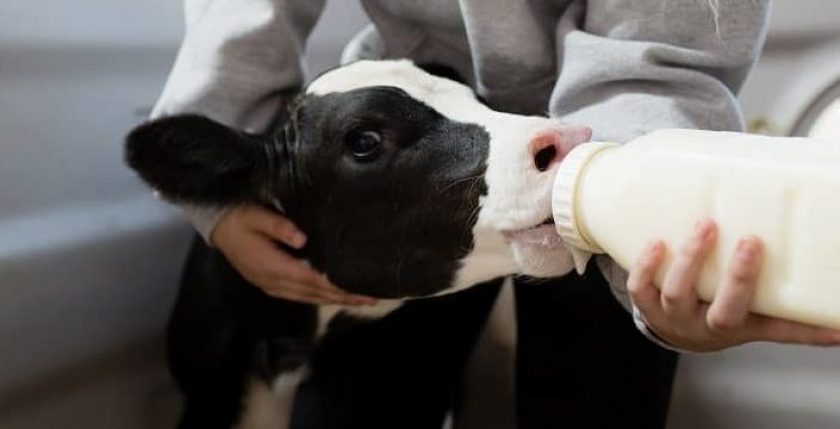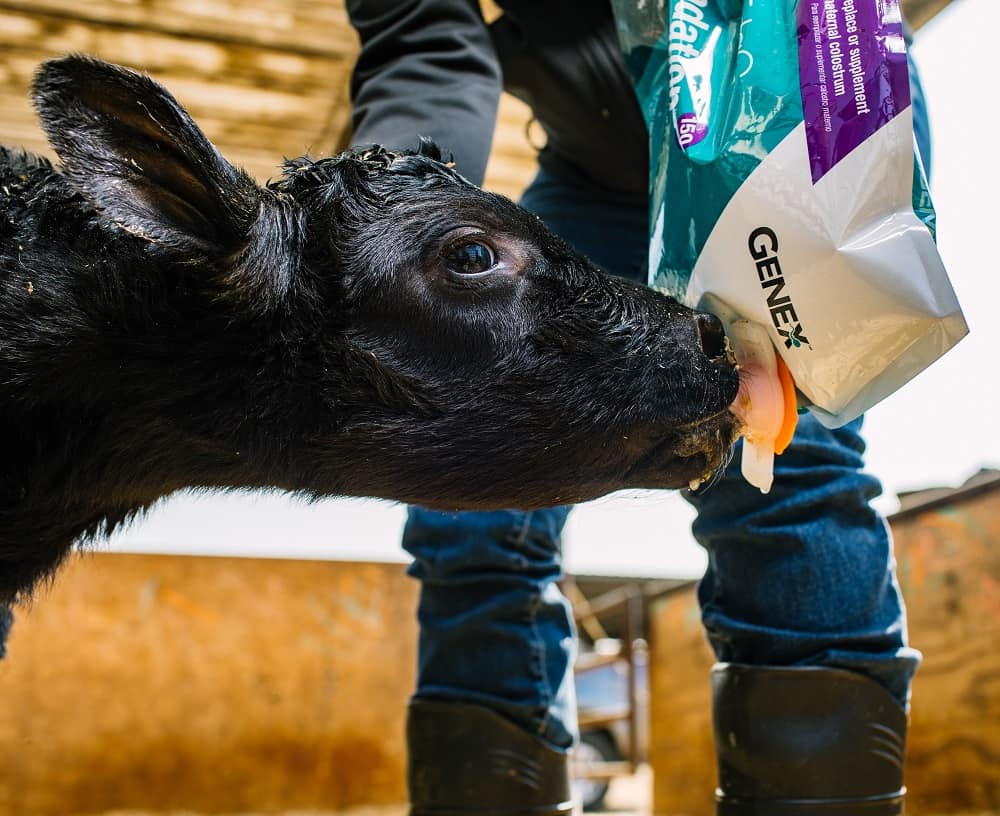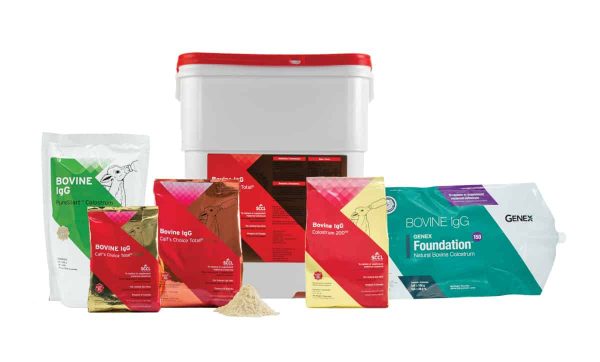Here are a few tips from SCCL, a leader in developing and producing innovative colostrum products, for knowing when and how to feed calves colostrum.
How do good colostrum feeding practices impact calf productivity?
The single, most important meal your calves will consume in their lifetime is the first feeding of colostrum.
However, the impact of good colostrum feeding practices is often overlooked. Good colostrum feeding practices and feeding more colostrum can lead to 1) improved average daily gain; 2) reduced treatment costs and; 3) better feed conversion efficiency. Improvement in these three areas offers financial benefits to your dairy.
When do calves need a colostrum supplement or replacement?
There are many instances when your calves should be fed a colostrum product. For example, calves born in very cold weather, twin births and calves born to first-calf heifers benefit from colostrum supplementation. However, calves born with difficulty are at greatest risk for failure of passive transfer of immunity since they are often slow to get up and suckle. Additionally, these calves’ ability to absorb antibodies may be compromised due to the delay of nursing and altered metabolic parameters. Whenever a calf is born with intervention or assistance, the calf should receive at least a supplemental dose of colostrum, if not a full replacement dose.
When should colostrum be fed?
With each minute that passes after birth, your calf’s ability to absorb antibodies is reduced. By 24 hours the gut is almost completely closed and can no longer absorb antibodies. Therefore, you must feed colostrum as soon as possible after birth, ideally within an hour. If colostrum has been delayed past 2 hours, feed larger amounts to compensate for reduced absorption.
How much colostrum do my calves need?
When it comes to your calves and colostrum, more is better. Most veterinarians recommend calves receive at least 1 gallon or 4 liters of good quality colostrum, which should provide at least 200-300g of IgG.
Good quality colostrum replacers can be used when the dam does not provide sufficient volume or where colostral quality/IgG/antibody concentration is low. A significant percentage of first-calf heifers produce only small volumes of colostrum, sometimes less than 1 liter, so their calves would benefit from a colostrum supplement or replacer.
New USDA National Animal Health Monitoring System data shows calves with 8 g/L serum IgG (indicative of failure of passive transfer of immunity) had a 40.3% chance of becoming ill and 5.2% risk of mortality. In comparison, calves with excellent passive immunity – indicated by serum IgG levels of 30 g/L or higher – had a 29.3% risk of illness and 2.0% risk of death.
If feeding 300g of a colostrum replacer, it is recommended to divide the colostrum into multiple feedings. Do not feed the entire amount at once.
How should I feed colostrum?
First, attempt to bottle feed your calf. If the calf does not consume the entire bottle or colostrum feeding is delayed past 6 hours, tube feeding the remainder is suggested in attempt to achieve successful passive transfer of immunity. Since absorption slows significantly as each hour passes, calves also benefit from a second and third feeding of colostrum.
Should my cold weather calves be treated differently?
Calves have a thermal neutral zone of 59 to 77°F (15 to 25°C) and many are born in conditions much colder than that. Calves need a timely feeding of colostrum to warm them by providing energy to produce body heat. (Note that bottle-fed colostrum should be warm but not too hot to immerse your hand in.) Colostrum contains unique colostral fat that initiates metabolism of brown fat stores, which fuels the calf’s internal furnace for heat and energy to get up, suckle, stay warm and stay alive.
Can I use colostrum from my cows, and if so, how?
Herd colostrum can be used to supplement calves of other dams, but to be done right, it is a demanding process. Colostrum should be collected with sanitized equipment within 2 hours after birth of the calf. Then, it should be tested with a refractometer to measure quality; only colostrum that meets parameters consistent with high IgG/antibody levels should be used. The colostrum should be cooled in small 1L or less containers as quickly as possible since bacteria numbers double every 20 minutes. Then, the colostrum should be stored in a refrigerator for no more than 48 hours or frozen for no more than a year. Avoid repeated freezing and thawing as this may reduce colostrum quality and lifespan.
What should I look for in a colostrum product?
Examine your ingredient labels carefully. Colostrum products can be made from various sources; however, the greatest benefits come from feeding actual colostrum rather than formulas of proteins and fats from other sources. Colostrum-based products contain all the immune, metabolic and growth factors naturally found in maternal colostrum.
One important ingredient is colostral fat. Colostral fat is essential for activating brown fat metabolism, an important energy source required by the calf immediately after birth. Products that contain blood or whey with added vegetable and animal fats not naturally found in colostrum do not provide the same benefits for the calf, and some of these products contain no actual colostrum.
Also, look for products that are regulated by the USDA (United States) or CFIA (Canada) and backed by numerous safety and efficacy studies published in scientific journals.
What colostrum products are available through GENEX?
We offer an array of colostrum products to meet your needs whether feeding a full replacer or a supplement.
The following colostrum products are available in the USA: Calf’s Choice Total® HiCal Colostrum, Calf’s Choice Total® Gold, Colostrum 200™, PureStart™ Colostrum and Foundation™ 150 Natural Bovine Colostrum and can be purchased online or through your local GENEX representative.
For product availability in other countries, please contact GENEX or the local GENEX distributor.




